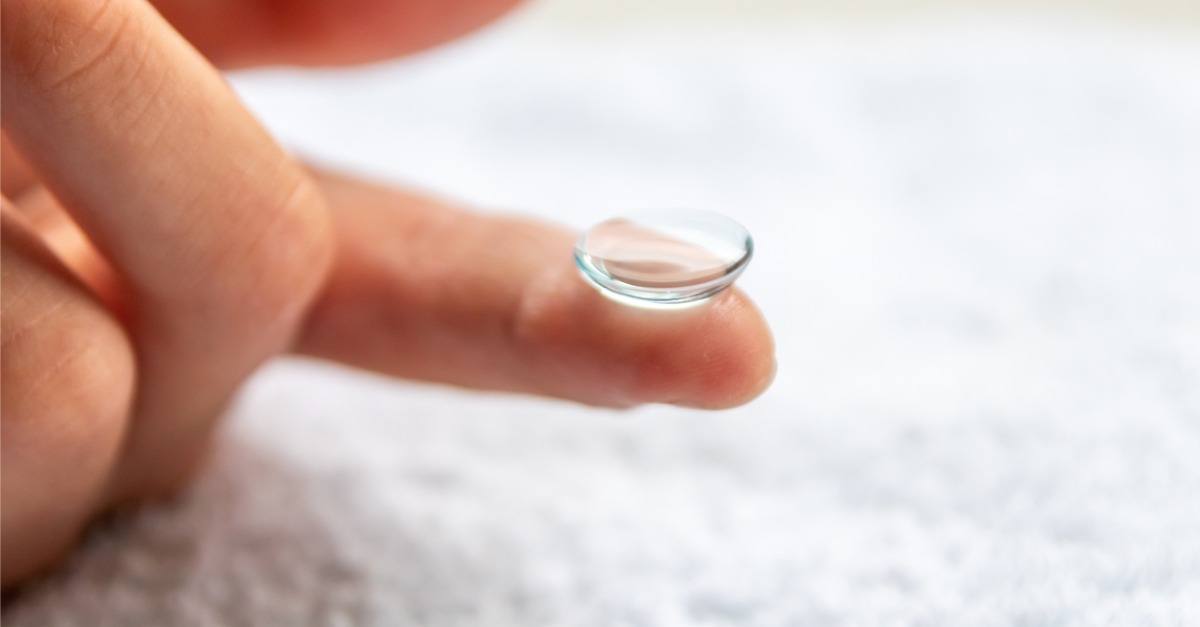When used properly, contact lenses are generally a safe and effective option for vision correction. Yet, they do come with certain risks — most of which arise with improper wear, cleansing, or storage habits. Here’s what you should know about infections caused by contact lenses and how to prevent them.
Signs of an Eye Infection Caused by Contact Lenses
One of the most common conditions associated with contact lens use is keratitis. This inflammation of the cornea (the clear tissue that covers your pupil and iris), can be either infectious or noninfectious. When noninfectious, keratitis is usually caused by an outside irritant, such as from a minor injury or wearing your contacts for too long. When it’s infectious, however, an outside agent such as bacteria, fungi, viruses, or parasites are to blame.
Symptoms of keratitis related to contact lens use may include:
- A feeling of having something in your eye
- Blurred or decreased vision
- Light sensitivity
- Increased tear production
- Eye pain or redness
Signs of a contact lens infection always warrant a prompt call to your eye doctor’s office. Left unaddressed, these conditions could escalate and become serious to the degree that may even cause blindness.
How Contact Lens-Related Eye Infections Are Treated
The type of treatment you receive will depend on the type of infection you have. Eye doctors can use a variety of methods to form an accurate diagnosis. For example, in addition to closely examining your eye and any symptoms, they may also collect some of your tears, which are then sent to a lab to pinpoint the underlying cause of the irritation.
For bacterial keratitis, the primary treatment will involve antibiotic eye drops. You may be required to use these frequently throughout the day, possibly in tandem with a separately prescribed oral antibiotic.
In the case of fungal keratitis, antifungal eye drops and oral medications are typically prescribed. Antiviral eye drops and medications may be required if a virus has caused the keratitis, but in some cases, only artificial tears are needed as the eye heals from a viral infection.
How to Prevent Infections with Contact Lenses
Fortunately, most contact lens-related infections can be prevented with a few safe practices. Follow the six Rs of contact lens use to reduce your risk of infections and irritation.
- Rub: With freshly washed hands, remove your contact lenses and gently rub them with a solution before storing them. Even if your contact lens solution doesn’t require rubbing, it’s still a good idea to do so, to help to loosen any bacteria which could otherwise cause infection.
- Rinse: After careful rubbing, rinse your lenses with a professional solution thoroughly to remove any trace amounts of residual bacteria.
- Replace: Replace your lens case at least three times a year, or whenever it’s beginning to look grimy.
- Rest: Give your eyes a break from your contact lenses periodically. Always remove them before bed or taking a nap, as wearing them while sleeping can increase your risk of infection or injury.
- Renew: Follow the instructions provided to ensure you’re only using your contact lenses for the recommended period of time. You’ll want to renew with a fresh set whenever recommended to reduce your risk of infection.
- Reserve: Mark your calendar reserve appointments with your eye doctor at regular intervals. Whether you wear contacts or not, most patients need to visit the eye doctor once a year.
If you’re due for your annual eye exam or have any issues related to contact lenses, request an appointment online with Eye Consultants of Atlanta. Our eye care specialists can help you find the best lenses to fit your lifestyle and discuss best practices in greater detail to help you prevent infections. You can also call us directly at 404-351-2220.

